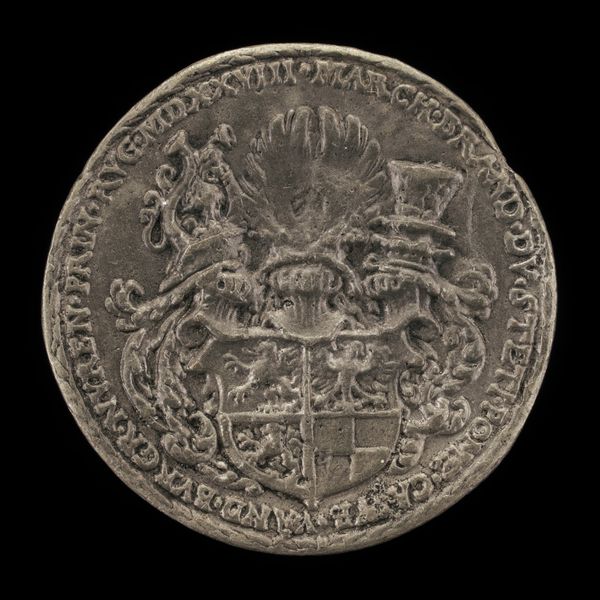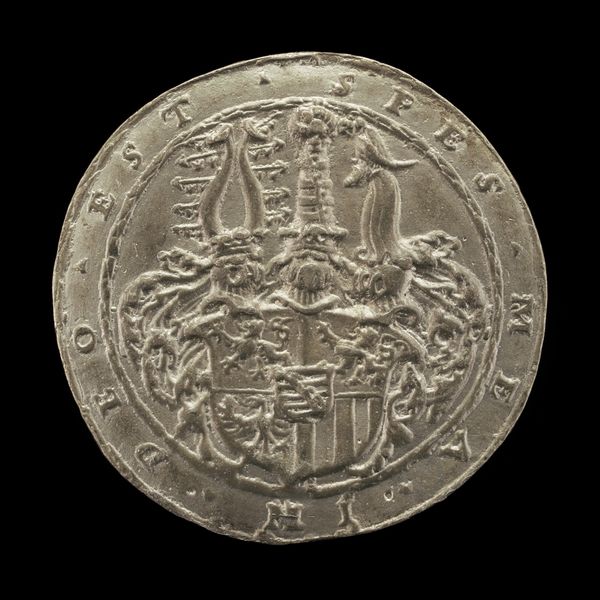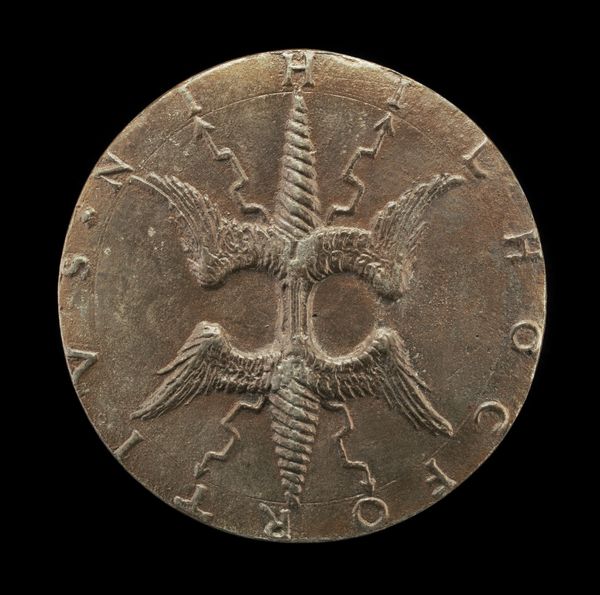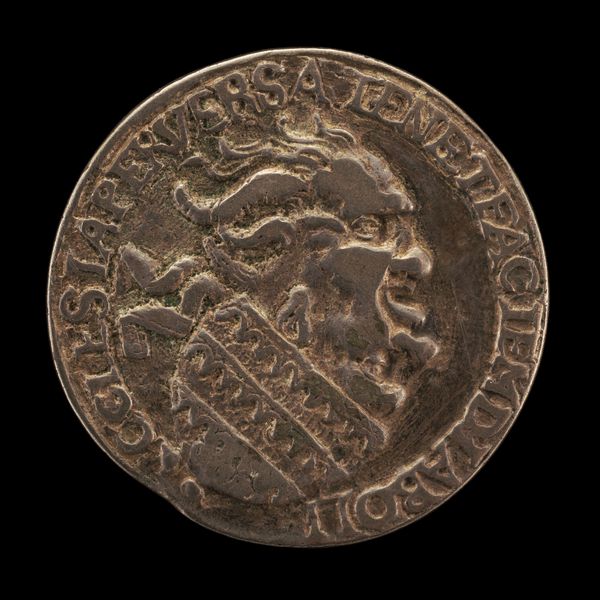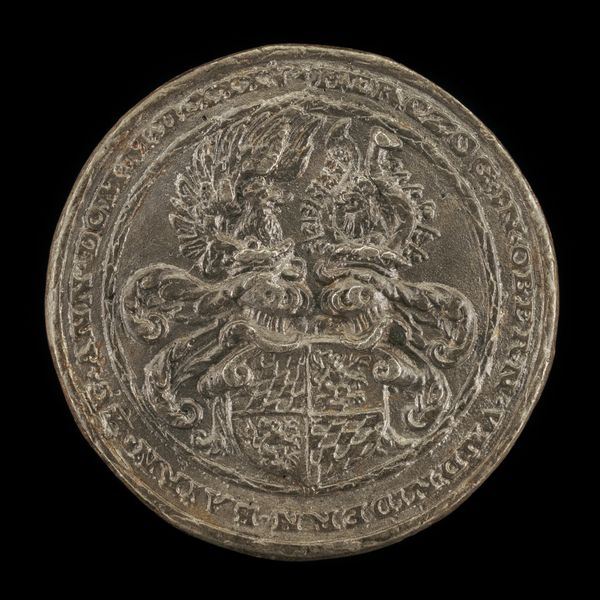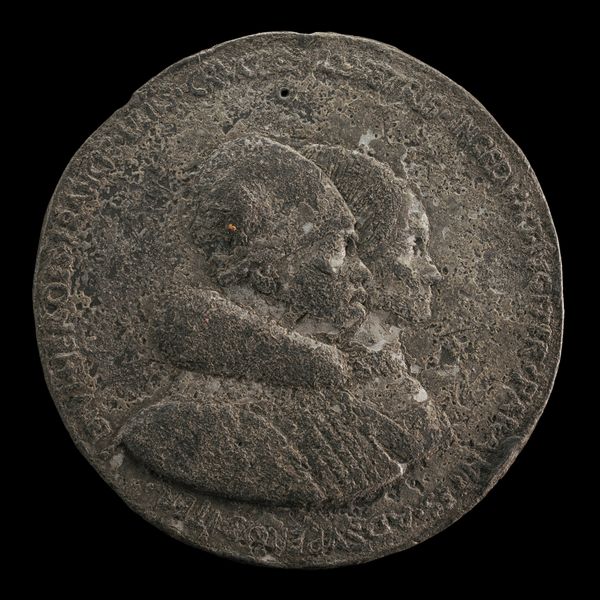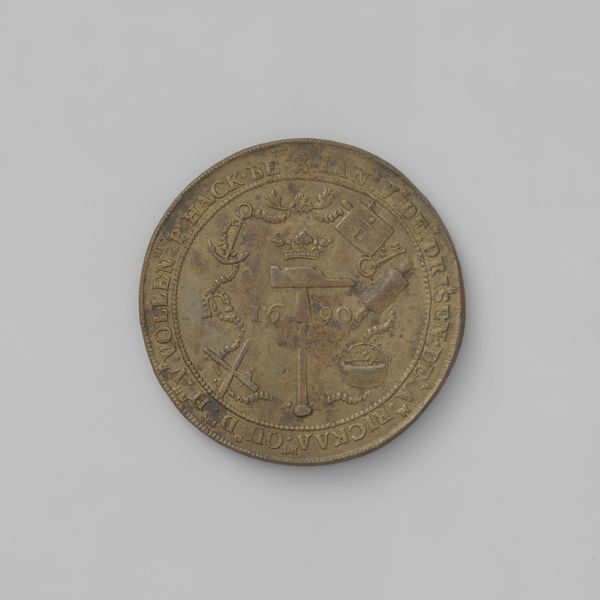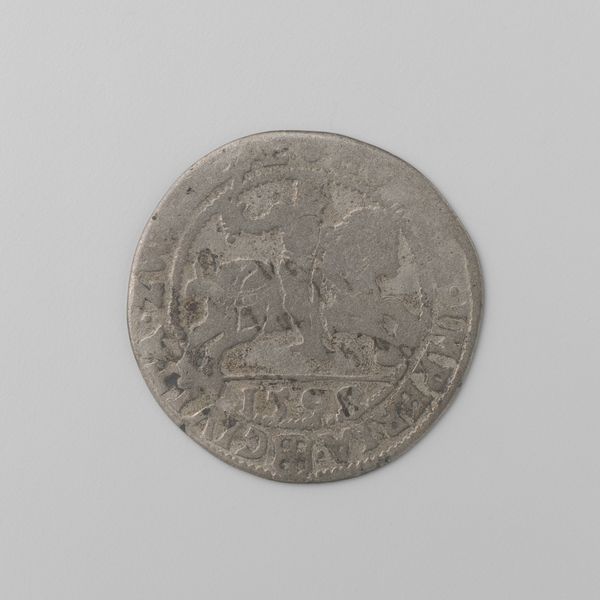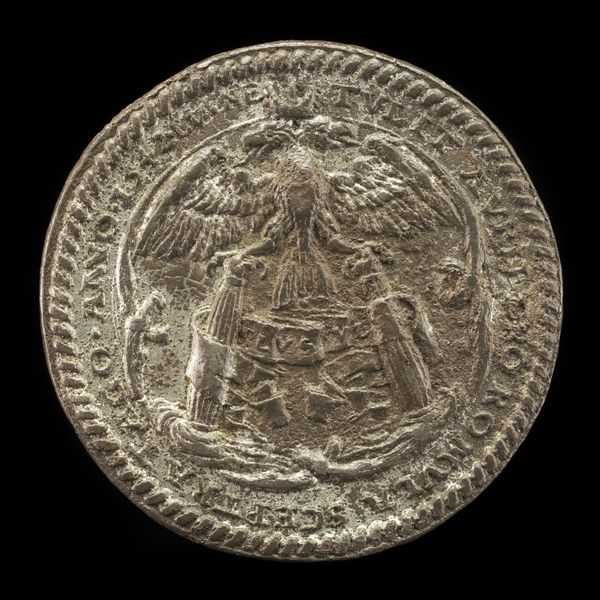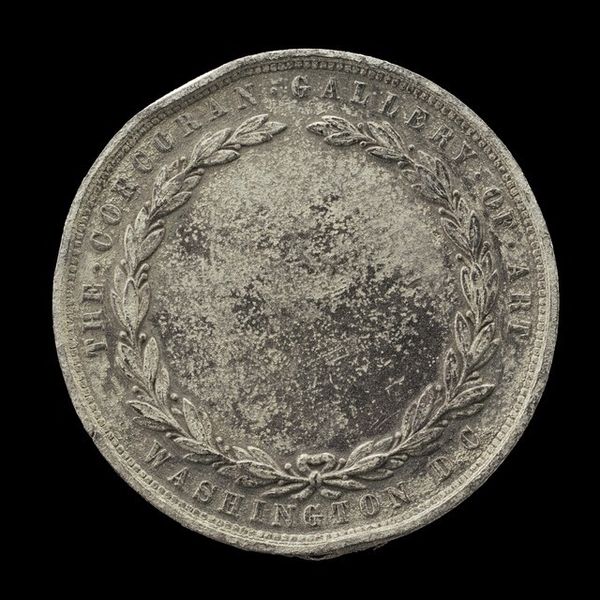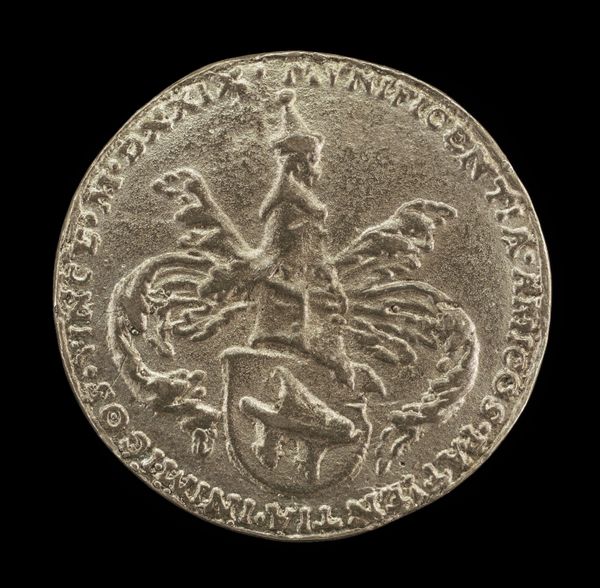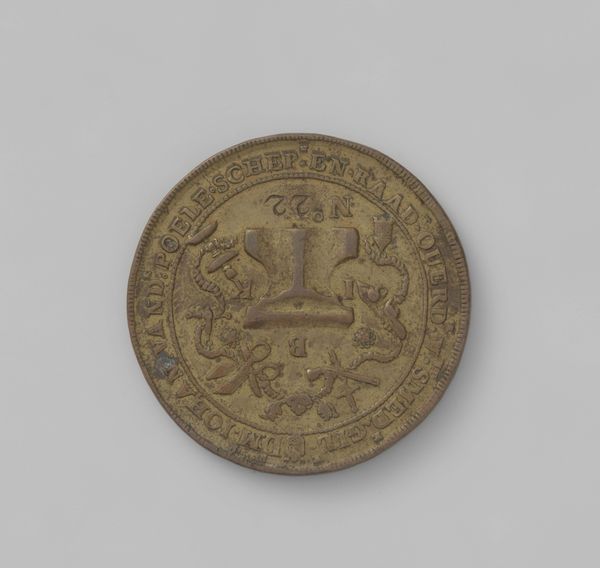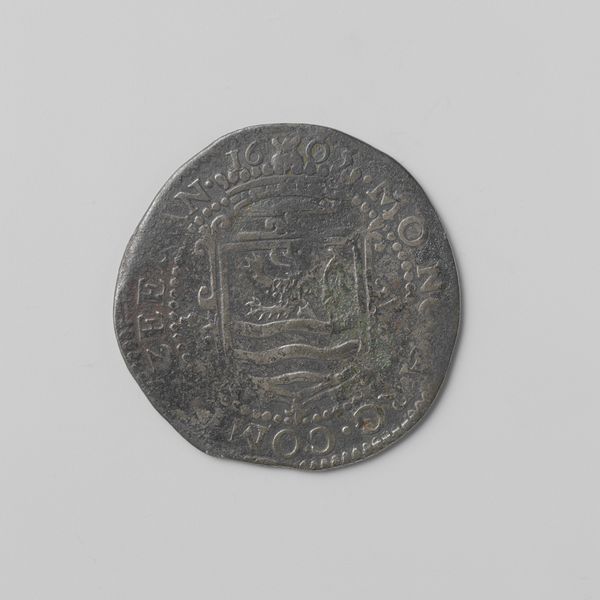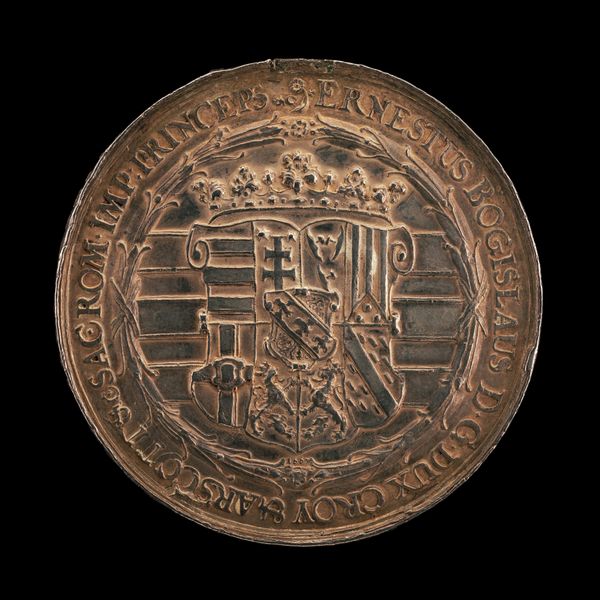![Prince Charles, 1600-1649, King of England 1625 [reverse] by Simon van de Passe](/_next/image?url=https%3A%2F%2Fd2w8kbdekdi1gv.cloudfront.net%2FeyJidWNrZXQiOiAiYXJ0ZXJhLWltYWdlcy1idWNrZXQiLCAia2V5IjogImFydHdvcmtzLzIwMzExYzg5LTE2YjQtNGJiMi05OTk2LTMyM2Y5ZDQ2ZGI5NC8yMDMxMWM4OS0xNmI0LTRiYjItOTk5Ni0zMjNmOWQ0NmRiOTRfZnVsbC5qcGciLCAiZWRpdHMiOiB7InJlc2l6ZSI6IHsid2lkdGgiOiAxOTIwLCAiaGVpZ2h0IjogMTkyMCwgImZpdCI6ICJpbnNpZGUifX19&w=3840&q=75)
Prince Charles, 1600-1649, King of England 1625 [reverse] c. 1625
0:00
0:00
silver, sculpture, engraving
#
portrait
#
medal
#
silver
#
baroque
#
sculpture
#
sculpture
#
history-painting
#
engraving
Dimensions: overall (diameter): 3 cm (1 3/16 in.) gross weight: 2.15 gr (0.005 lb.) axis: 12:00
Copyright: National Gallery of Art: CC0 1.0
Editor: Here we have a silver medal, an engraving by Simon van de Passe from around 1625. It depicts Prince Charles, later King Charles I of England. It has quite a serious, almost austere feel to it. I'm struck by the craftsmanship visible in the fine lines of the engraving. What do you see in this piece? Curator: The material itself – silver – speaks volumes. Consider its extraction, its refinement, the labor involved in transforming raw ore into this precise form. This isn't just a portrait; it's a product of very specific economic and social forces. Who would have been commissioning such objects, and why silver? Editor: So the choice of silver indicates wealth and power? A display of status through material means? Curator: Precisely! And consider the engraving process. It requires skill, time, and specialized tools. Van de Passe wasn't just an artist; he was a skilled laborer embedded within a system of patronage and production. Each line, each detail, tells a story about the resources available to him and the intended audience of this image. Editor: I never thought about the actual process so much. It's easy to just see the portrait. Curator: The portrait itself becomes almost secondary. It's not just about Charles; it's about the networks of power, craft, and commerce that enabled this object to exist. How does understanding its making influence your appreciation of it now? Editor: It makes me think about all the hidden work, all the resources poured into making even something relatively small like this medal. It shifts the focus away from just Charles' image to everything *behind* the image. Curator: Exactly! The medal then stands as a testament to the complex material and social relations of the 17th century. A simple image becomes a window into production and consumption.
Comments
No comments
Be the first to comment and join the conversation on the ultimate creative platform.
